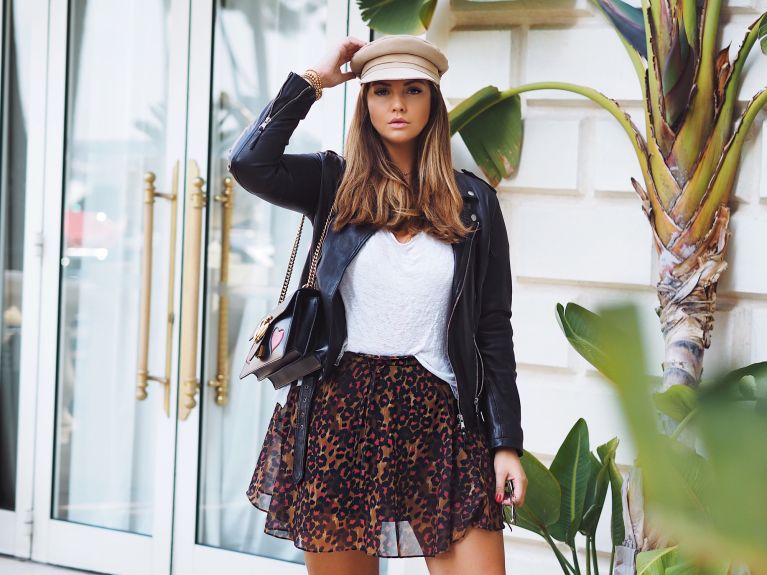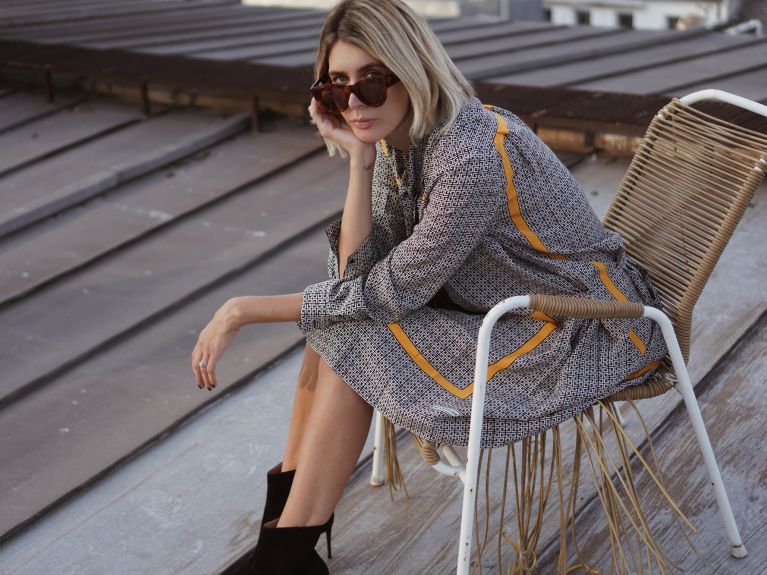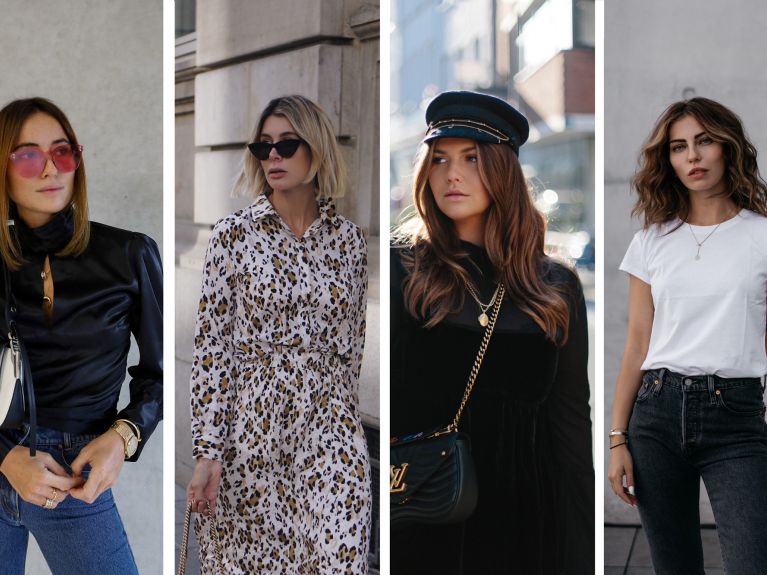Be inspired!
Four German fashion bloggers talk about how social media are turning the fashion industry on its head.

How have influencers changed the German fashion world?
Victoria: Influencers make it easier for young, local labels to enter the market. They expand our field of vision and show that there is a lot more besides long-established brands.
Farina: Thanks to influencers, inspiration seems to come easier for many people. The right account exists for literally every style and every budget.
Lena: Influencers have made fashion more approachable and brought it to a personal and individual level that most consumers can identify with much better.
Maria: In the past, trends were defined by fashion designers and renowned fashion houses and then adapted for the commercial market. The way it works today is more of an exchange: influencers are having a growing impact on the fashion industry and are in turn influenced by the community itself.

Is high fashion becoming more transparent as a result of social media?
Victoria: For a long time, the high-fashion industry had the reputation of being aloof and arrogant. Social media can show the entire range of creative work involved in addition to the finished product. The designer’s inspiration, creativity and ‘blood, sweat and tears’ become more real.
Farina: Social media have made the high-fashion industry accessible to the general public. I think that’s great. Fashion should be fun, not an exclusive club.
Lena: I think it’s good that more people are gaining access to exclusive industries through the democratization of the social web. This enables us to get involved in – and enthusiastic about – many more issues.
Maria: As a result, fashion grows and attracts more attention in our everyday lives.
The designer’s inspiration, creativity and ‘blood, sweat and tears’ become more real through social media.
Do Berlin, New York and Paris still have a local look, or are the social media making fashion look the same everywhere?
Victoria: I don’t think there’s a ‘global look’ – that would be a great pity because fashion is so varied. I’m a big fan of the Scandinavian style, but I’m also increasingly discovering Scandinavian simplicity and informality in Italian collections. Globally, there are many different styles with different origins, but they’re not tied within borders.
Farina: I certainly believe there are local styles. But that’s also connected to the respective cities and their lifestyles.
Lena: Berlin, New York, Paris and Copenhagen really do have quite different styles. What stands out is that the social media accounts are becoming increasingly similar to each other. Nobody takes time any more to work out their own personal style. Many people feel safer in a consensus. Unfortunately, the diversity of individual interpretations suffers as a result.
Maria: There are still different styles at present. They become especially visible at the fashion weeks: while in Italy women dress in a much more feminine and conservative way, the people at the Scandinavian Fashion Weeks look much more distinctive and minimalist. And in Berlin? The main thing is to stand out.
Do social media reinforce the throwaway culture?
Victoria: This really is a development that I follow very critically. I also consume fast fashion, but much more cautiously than I did just a few years ago. As a blogger, I can show my followers that you don’t have to follow every trend.
Farina: I do believe that it’s making fashion faster-moving. But I don’t think the social media are the only thing driving our throwaway culture. The problem was also already there in the days of teleshopping.
Lena: Maybe, by consuming information so quickly via social media, our society has lost the ability to focus on topics more intensively. But there are also many accounts that use social media specifically to share meaningful messages.
Maria: Like advertising, the throwaway culture was also around before social media. That’s why social media are no better or worse than other marketing portals that can be instrumentalized by advertising. Their speed also has advantages: the direct feedback enables a niche market, e.g. for sustainable products, to grow much faster.
Is there a typical German style?
Victoria: In an international comparison, the German style is perhaps a little more classic and discreet. The urge to attract attention and stand out is less pronounced.
Farina: I don’t think there’s a typical German style. In the meantime, the Germans, too, are super stylish and individual when it comes to fashion.
Lena: The German style is down-to-earth, not too fussy, perhaps a little sporty. The main thing is not to be conspicuous.
Maria: A practical look is typically German in my view. Germans are more interested in good value for money than in trends. That makes the fashion more minimalist and functional.
Interviewer: Kim Berg
Don’t miss: Victoria Nasir (torinasir) will be blogging for deutschland.de from the Berlin Fashion Week from 15 to 17 January. Follow this link:www.instagram.com/deutschland_de

Newsletter #UpdateGermany: You would like to receive regular information about Germany? Subscribe here to:
